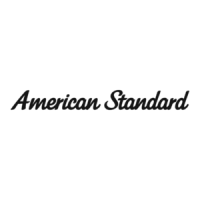
Do you have a question about the American Standard Ameristar 2A7M3018-060A1000A and is the answer not in the manual?
| Type | Heat Pump |
|---|---|
| Model Number | 2A7M3018-060A1000A |
| Brand | American Standard |
| Series | Ameristar |
| Cooling Capacity (BTU/h) | 60000 |
| Cooling Capacity (Ton) | 5 |
| Heating Capacity (BTU/h) | 60000 |
| Heating Capacity (Ton) | 5 |
| Refrigerant | R-410A |
| Voltage | 208/230 |
| Phase | 1 |
| Compressor Type | Scroll |
| Stages | Single |
Intended for experienced individuals; improper repair can cause injury or damage. Manufacturer not liable for interpretation.
Recommends matched systems for maximum efficiency, optimum performance, and overall system reliability.
Unit must be positioned minimum 12 inches from walls/shrubbery, with front access for control box and service panels.
Top discharge area requires 5 ft. unrestricted space. Locate units away from noise-sensitive areas to minimize sound transmission.
Unit must be set on a level pad at least as large as base pan, not in direct contact with structure.
Maximum recommended length for refrigerant lines from outdoor to indoor unit is sixty (60) feet.
Ensure all joints on existing refrigerant lines are brazed, not soldered, as condensing units have braze connections.
The gas line must always be insulated to prevent condensation and energy loss.
Caution: Scroll compressor dome temperatures can be very hot, posing a burn risk if touched.
Units are factory charged for 15 ft. lines. Final refrigerant charge adjustment is necessary per unit nameplate.
Describes operation of brass liquid and gas line service valves, noting pressure taps open to the field brazing side when seated.
Extreme caution is advised when opening liquid/gas service valves. Turn stem counterclockwise until it contacts the rolled edge; no torque is required.
Explains the operation of the brass gas line ball service valve, which is fully open with a 1/4 turn.
Preparation involves removing covers, cleaning tubes, and cutting/fitting tubing to minimize sharp bends.
Insulate the gas line and fittings. Do not allow uninsulated liquid line to contact the bare gas line.
Use precautions like removing valve cores and using wet rags to prevent heat damage to valve cores and basepan during brazing.
Employ a dry nitrogen purge and brazing alloy without flux. Flow nitrogen through tubing via pressure tap ports during brazing.
Ensure the pressure tap port valve core is replaced before attaching hoses for evacuation procedures.
Pressurize lines with dry nitrogen to 350-400 psi and check all field joints for leaks using soap bubbles or other methods.
Evacuate lines and indoor coil to below 350 microns using a vacuum pump and micron gauge.
Monitor micron gauge after pump shutdown; a rise above 500 microns in one minute indicates incomplete evacuation or a leak.
Charge system with vapor refrigerant, do not vent any refrigerant into the atmosphere.
Open liquid line valve, then gas valve. Replace all valve stem and pressure tap caps finger tight, then tighten an additional 1/6 turn.
Instructions for opening the gas valve (ball type and service valve) and liquid line shut-off valve.
System refrigerant charge may need adjustment if refrigerant lines differ from the recommended length or size.
Always exercise basic safety precautions to avoid electric shock when installing or servicing equipment.
Power wiring and grounding must comply with local codes. Power supply must match the equipment nameplate.
Install a separate disconnect switch at the outdoor unit. Use flexible electrical conduit to prevent noise transmission from vibration.
Color-coded low voltage wire recommended. Table 1 provides maximum wire lengths for 24V circuits.
Set thermostat to OFF, apply power for one hour to activate sump heat before setting thermostat to ON to prevent overload.
Details final operational and checkout procedures to ensure proper system performance after installation.
Provides a chart for diagnosing system faults by checking various refrigerant and electrical circuit components.
Subcooling is the recommended method for charging cooling mode above 55°F ambient temperatures.
Operate system for 20 minutes for stabilization. Measure liquid line temperature and pressure at service valves.
Determine total line length/height and unit nameplate design subcool temperature to find target liquid line pressure.
Add or remove refrigerant to match table pressure. Wait 20 minutes between adjustments for system stabilization.
Verify that refrigerant lines have been checked for leaks after installation.
Confirm that suction lines and fittings are properly insulated.
Ensure all refrigerant lines are securely fastened and properly isolated.
Verify masonry passages are sealed, preventing mortar contact with copper tubing.
Check all electrical connections for proper tightness.
Observe outdoor fan for clearance and smooth operation during its cycle.
Confirm that the indoor coil drain line is draining freely.
Ensure supply registers and return grilles are open and unobstructed for proper airflow.
Verify that the return air filter has been installed correctly.
Check thermostat thermometer accuracy against a reliable thermometer and adjust as needed.
Verify that the correct speed tap is being used for the indoor blower motor.
Operate the complete system in all modes to ensure safe and correct operation.

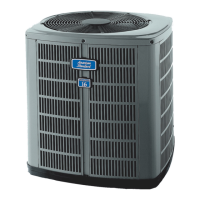
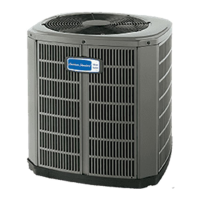
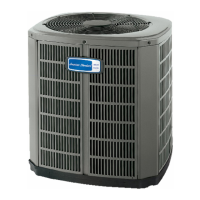

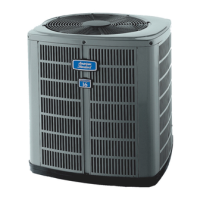

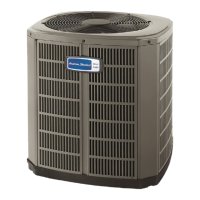
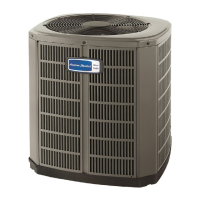



